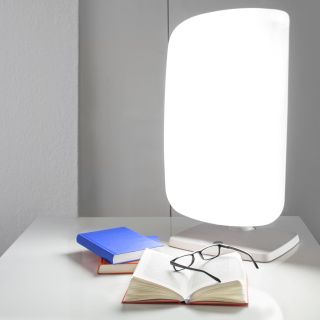Seasonal Affective Disorder (SAD): Signs, Symptoms, & How to Combat It
Author: Dr. Megan Oliverio
Life naturally slows down during the colder months, and this can impact everyone to different degrees. As the days get shorter, the light becomes scarce, and many of us respond by avoiding the elements. We more often find ourselves in front of the TV or snuggled under the covers to stay warm – the human version of hibernating. Some people embrace the season’s quiet and coziness, while others experience a significant change in mood and behavior. If you find yourself feeling different and struggling more significantly during the winter months, it’s important to consider that you might be dealing with Seasonal Affective Disorder.

Seasonal Affective Disorder, also known as SAD, is more than just the winter blues. It is a category of depression that emerges during particular seasons of the year. Most people notice SAD symptoms starting in November and increasing during the winter months through March. Though, a spring/summer version of the disorder exists as well – known as reverse SAD. While the exact cause of Seasonal Affective Disorder is unknown and contributing factors can vary from person to person, people who live in parts of the world that have long winter nights and less sunlight are more likely to experience the condition. Light is thought to have a significant influence on SAD. One theory is that decreased sunlight exposure affects the natural biological clock that regulates hormones, sleep, and mood. Most notably, a change in sunlight can affect your body’s levels of serotonin and melatonin- two hormones that affect your mood.
Signs & Symptoms
Signs and symptoms of SAD look the same as depression. They include daytime fatigue, difficulty concentrating, feelings of hopelessness, increased irritability, lack of interest in social activities, lethargy, decreased libido, unhappiness, and weight gain. If you’ve experienced these symptoms during the winter months for at least two winters, you might be experiencing Seasonal Affective Disorder. The symptoms of SAD can create a vicious cycle that can be hard to break. You should begin by talking to your mental health professional or doctor if you think you might be dealing with SAD. There are a number of treatments, including light therapy, medication, psychotherapy, and vitamin D supplementation. These may be used alone or in combination. A psychologist can help direct you to the right treatment plan for you.
Combating Seasonal Depression
There are a number of things you can do on your own to help support your health during the long winter months, and decrease the impact of SAD.
Get more light: Experience as much daylight as possible! Get outside for a walk during daylight hours or take up a winter sport to get you outside. Even if it’s an overcast day, you are still getting the benefits of sunlight. If you can’t get outside or it’s a particularly cold day, be sure to spend time sitting by a window or try using a SAD lamp – a specialized lamp that mimics sunlight. Getting exposed to natural sunlight early in the day can also help to regulate your circadian rhythm.

Increase Nutrition: While winter is a time when we most like to eat comfort foods, it’s important to ensure you are eating nutritionally dense foods. A healthy diet rich in vegetables and fruits and low in highly processed foods can help increase your body’s resilience to depressive symptoms. Being mindful of the time of day you eat can also help regulate your internal clock, something that seems to be impacted by SAD. Make sure to stop eating three hours before bed and try to keep your eating within a consistent 10 to 12-hour window. This can help give your body a strong cue to tell it the time of day, regardless of anything else that’s going on.
Stay Active: Like light or food, exercise is another environmental cue that helps signal our internal clock. Physical activity is a cue for us to wake up, and doing things like exercising during the active time of your day can help promote an active and awake brain during the right time of day and then allow your body to really rest in the evening. Exercise also helps produce endorphins, which are mood-boosting hormones that counteract serotonin and dopamine deficiencies. Pick an activity you enjoy, so it doesn’t have to be a chore. Walking, dancing, and even playing with your kids are all good forms of exercise.
Stay Connected: Social connections and spending time with those you love is a great way to lift your spirits and avoid social isolation. Snuggle your kids or pets, plan an activity with friends, or volunteer with your family. Be proactive about making pleasurable plans, and utilize friends and family to talk about how the season is affecting you.




